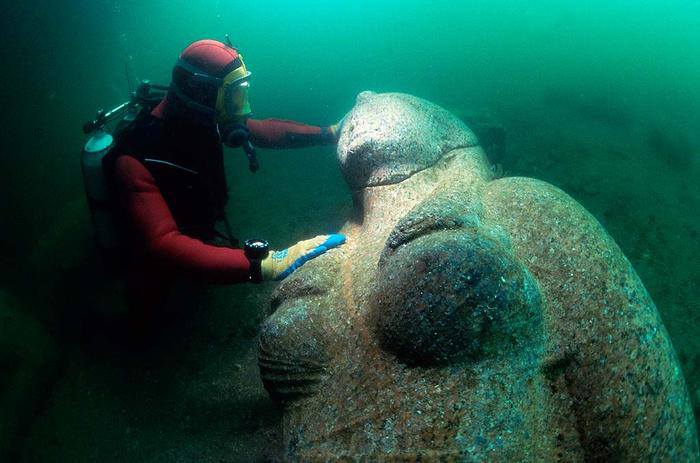Looters of Ancient Greek and Roman Artifacts Arrested in Egypt

Authorities in Egypt have arrested two men for attempting to steal hundreds of ancient Greek and Roman artifacts from the bottom of the sea, the country's interior ministry said in a Monday statement.
The men took the artifacts from the sea floor of Abu Qir Bay, near the port city of Alexandria, the ministry said. The ancient cities of Canopus, Heracleion and Menouthis lie submerged beneath the waters of the bay.
When confronted by authorities, the men said that had planned to traffic the items, according to the ministry. The men obtained all of the antiquities by diving to the bottom of the sea, it said.
Almost 500 ancient Greek and Roman artifacts confiscated in Egypt
Some 448 objects were taken by the men, the ministry statement said, including 305 coins, 53 statues, 41 axes, 14 bronze cups, 12 spears, and three statue heads.

The items date back to Greek and Roman Antiquity, a period that lasted about 900 years, from around 500 BCE to 400 CE.
Photographs released by Egypt's interior ministry show the items after they were seized.
The artifacts, turned turquoise by layers of patina, depict objects and people from the era they are from. Some statues depict ancient soldiers in uniform, while others appear to be people draped in fabric.
The coins are also intricately carved, featuring depictions of animals including lions, elephants, turtles, dolphins, and scorpions. Two coins appear to show the immortal winged horse Pegasus from Greek mythology.
In ancient times Abu Qir Bay was surrounded by marshland and contained several islands. As early as the 7th century BC, port cities were established on the bay.
Artifacts recovered from underwater cities
The bay now contains the underwater archaeological sites of three cities from the pre-Hellenistic, Hellenistic and Roman periods. The eastern part of ancient city of Canopus is submerged in the bay, along with the remains of Menouthis and its sister-city Herakleion–Thonis which now lies 7 kilometers offshore.
The lost city Of Heracleion, once the largest port in Egypt, was discovered underwater after over 2,000 years in the year 2000. Its legendary beginnings go back to the 12th century BC, and it has many links to Ancient Greece.
Flourishing as long ago as the waning days of the Pharaohs, the city was destroyed over time, as it was weakened by a combination of earthquakes, tsunamis, and rising sea levels.
At the end of the 2nd century BC, most likely after a severe flood, the monumental buildings of Heracleion collapsed into the water. Some of its inhabitants stayed in what was left of the city during the Roman era and the beginning of Arab rule, but by the end of the eighth century AD, the rest of Heracleion had sunk beneath the Mediterranean.
Related: Underwater City of Heracleion, Egypt, and Its Links to Ancient Greece
-- Sent from my Linux system.
No comments:
Post a Comment